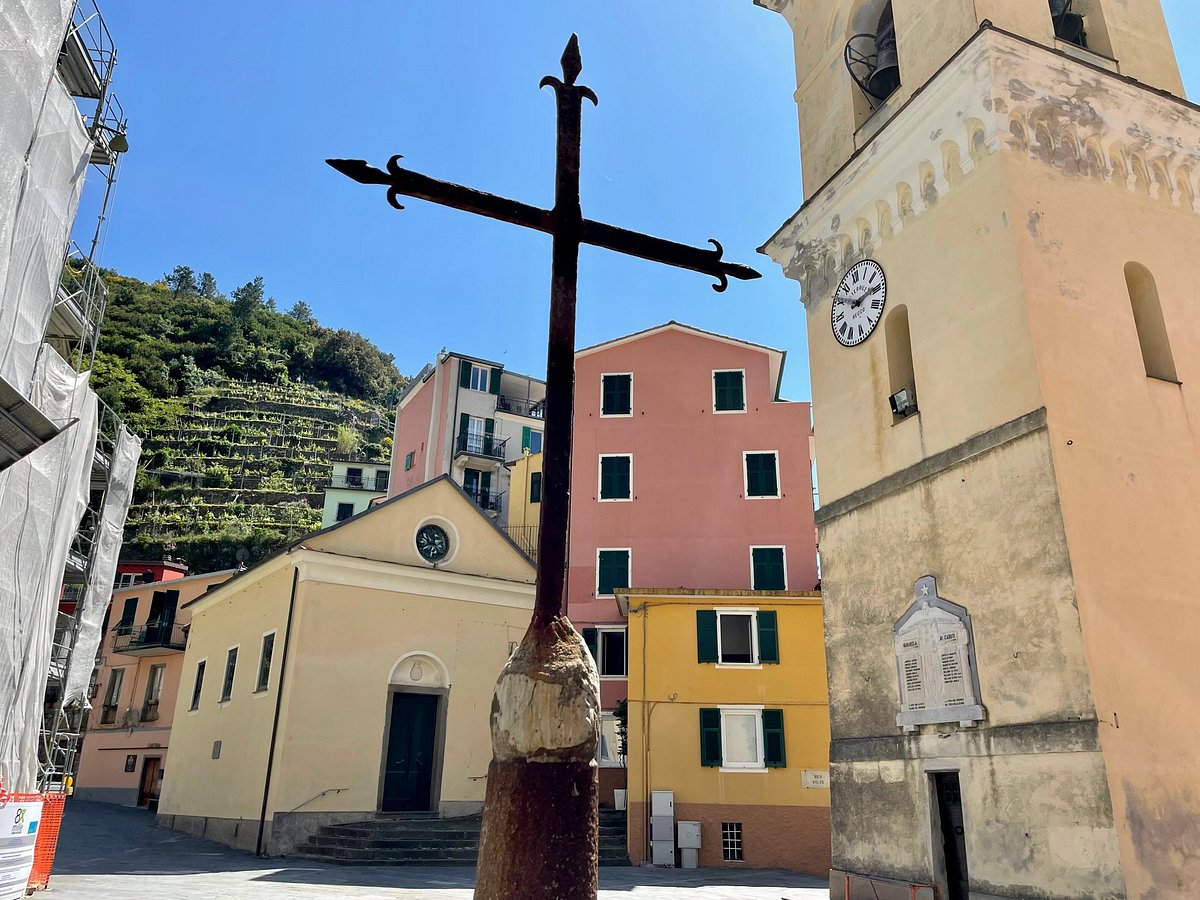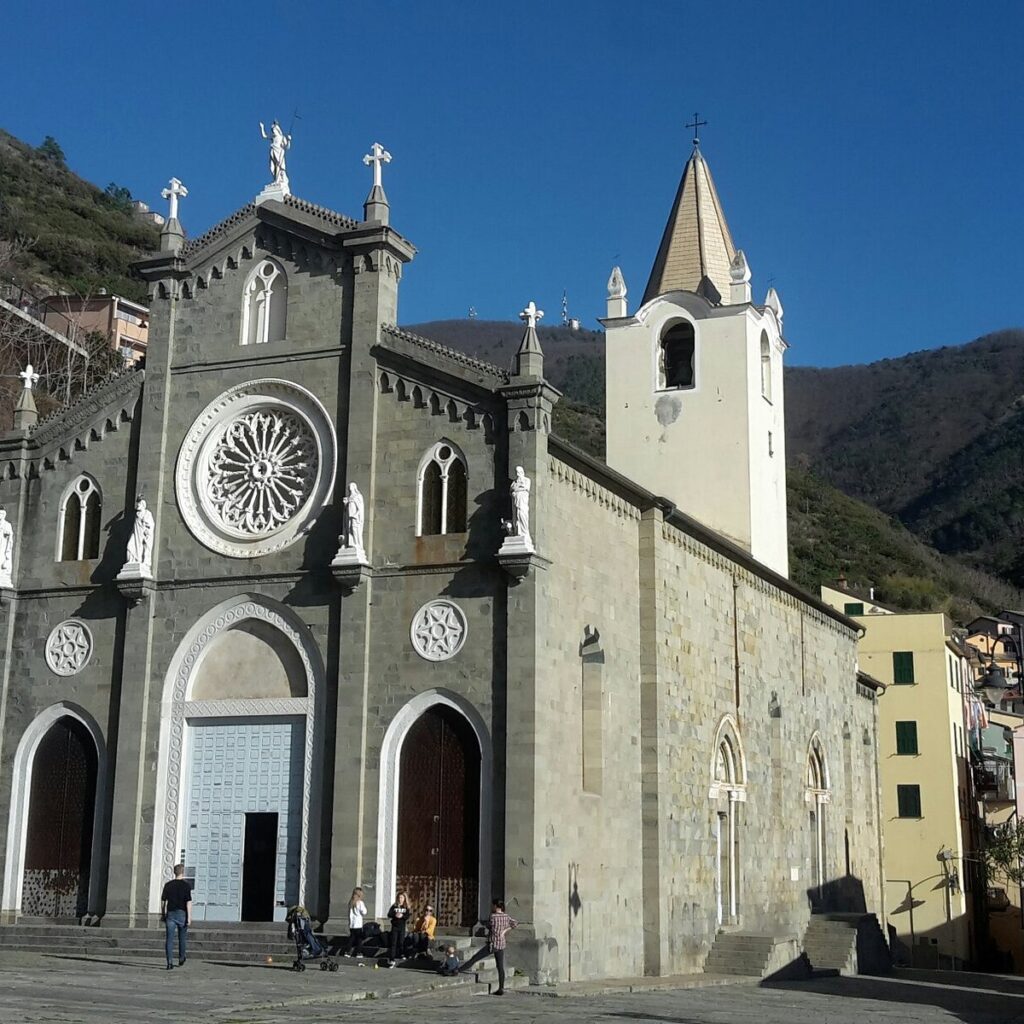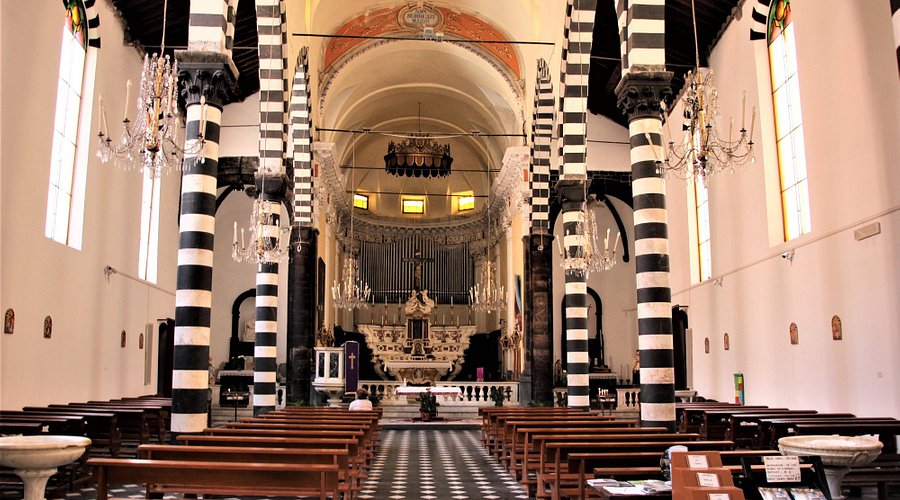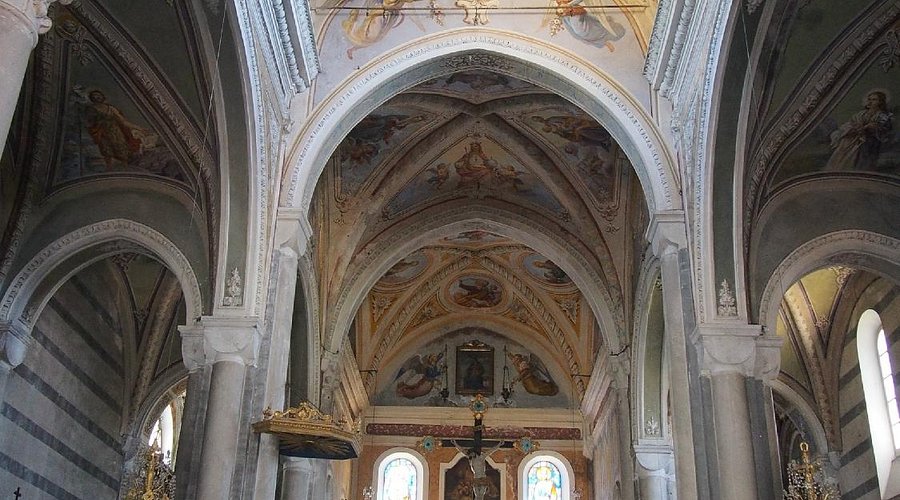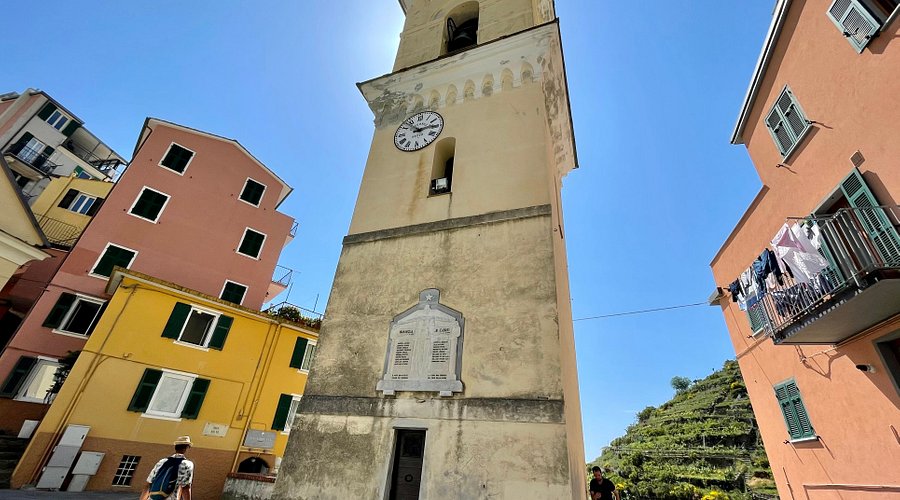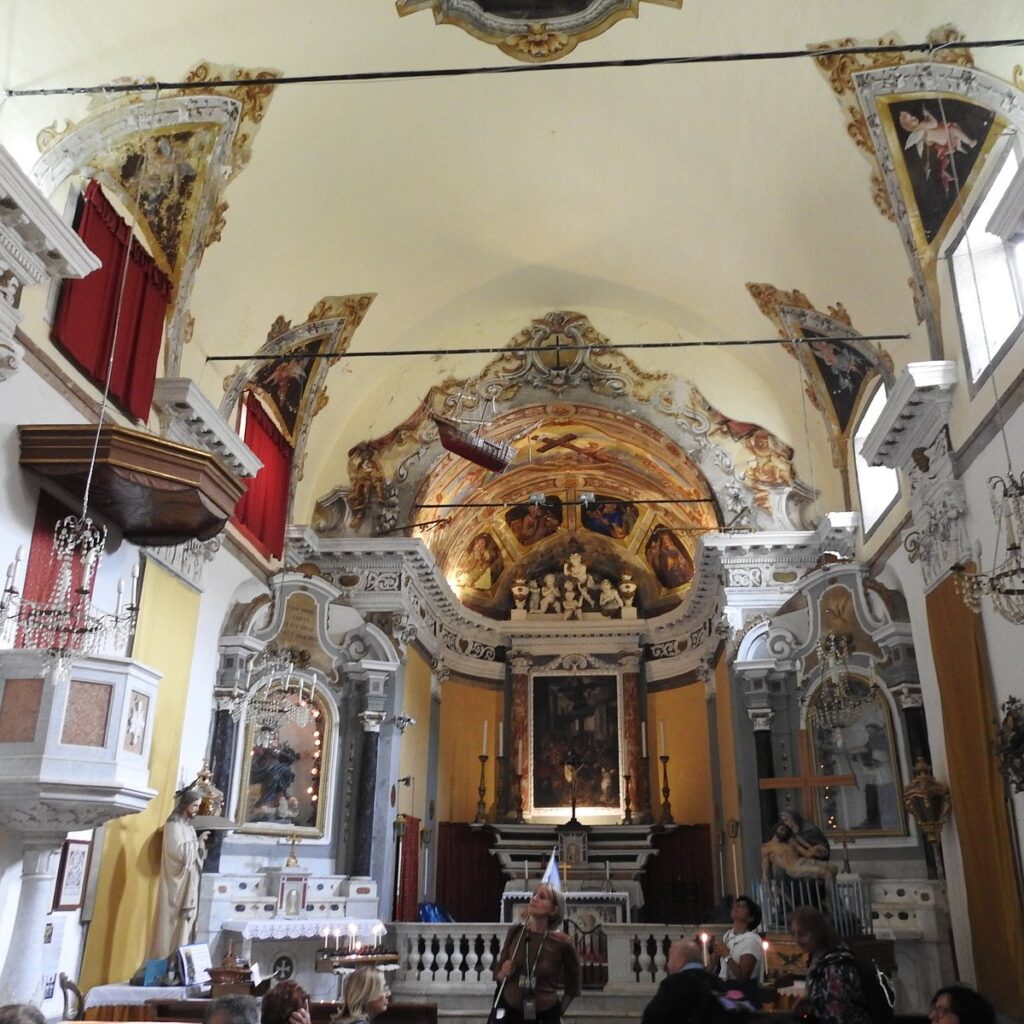Built in 1338 in the Ligurian-Gothic style, the small stone church of San Lorenzo is known for its beautifully crafted triptychs, most notably a 14th-century piece above the altar depicting the Madonna and Child with Saints Catherine and Lawrence. Although the bas-relief of St Lawrence’s martyrdom above the entrance is no longer visible, a ceiling fresco inside the church portrays the saint holding the grill on which he was burned.

